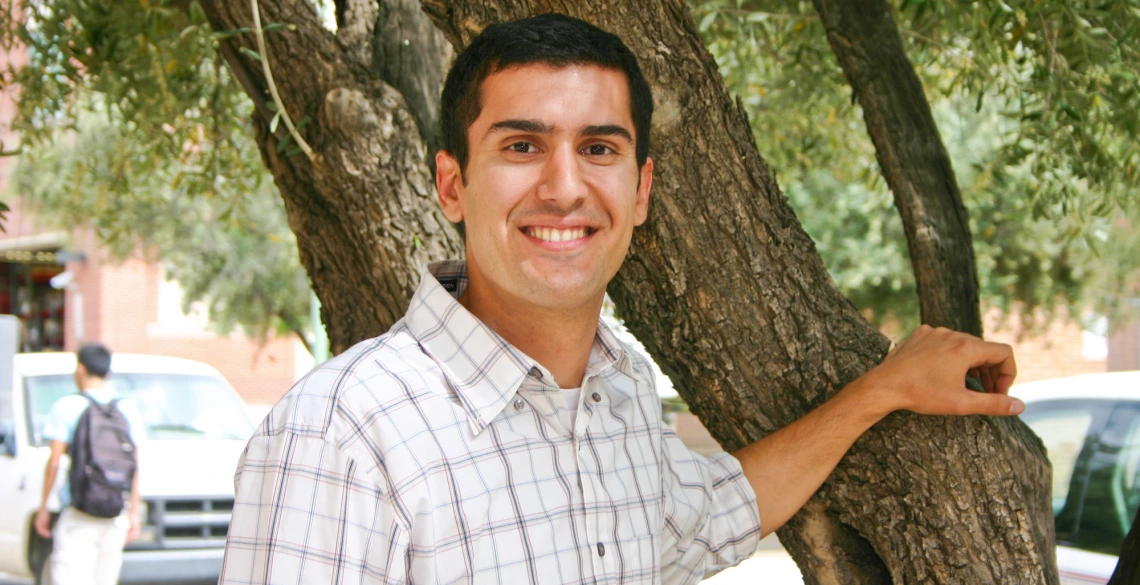Navy Awards UA Chemical Engineer $500,000 Under Young Investigator Program
The Office of Naval Research is funding the development of analytical equipment that will enhance Navy operations while advancing our knowledge of how aerosol particles affect the atmosphere.

Armin Sorooshian
Assistant professor Armin Sorooshian of the UA Department of Chemical and Environmental Engineering has been named one of the select few to receive more than $500,000 research funding from the Office of Naval Research.
The ONR recently named 17 recipients as winners of its 2010 Young Investigator Program, or YIP, which invests in scientists and engineers who show exceptional promise. Award recipients were selected from 211 proposal submissions. The winners will receive a three-year research grant up to $510,000.
"We are proud of this group of young outstanding scientists and engineers," said ONR's director of research, Michael Kassner. "Through their great work in the science and engineering fields, the recipients have raised the bar for excellence in research.
Sorooshian studies aerosol particles and how they interact with water and radiation in the atmosphere. These tiny atmospheric particles also interact with light and reduce visibility. Because aerosols are the seeds of cloud droplets, he is especially interested in how marine aerosols affect clouds.
He uses a range of methods and tools to study aerosols, such as satellite remote sensors, models, and aircraft measurements. "These aerosols, which influence critical environmental parameters such as visibility, remain poorly understood owing to their complex nature, measurement limitations, and the difficulty in untangling aerosol effects from meteorology," Sorooshian said.
Sky's the Limit
Sorooshian has taken part in numerous aircraft-based field measurement projects and his research group will continue this trend in May 2010 by participating in the CalNex field study in California, which is funded by the National Oceanic and Atmospheric Administration. Sorooshian will join a group of scientists who will carry out airborne measurements to understand the sources of aerosols and how they interact with radiation, water vapor, and clouds.
"A passion of mine since beginning my graduate studies at Caltech has been to be a flight scientist on the Navy Twin Otter and watch the science unfold before my eyes with real-time measurements of aerosol and cloud properties," Sorooshian said. "The in-flight measurements often dictate decisions during a flight about a particular plume to chase or a cloud to profile. It is an exhilarating feeling to be up there."
Professor Jim Field, chair of the department of chemical and environmental engineering, described Sorooshian as: "A brilliant new faculty hire with creative new approaches to evaluating the impact of aerosols."
"Armin has great promise to make an important advance in understanding how aerosols affect our planet," said Field, referring to Sorooshian's approach to using models and combining satellite data with measurements taken from aircraft.
The ONR funding will enable Sorooshian to develop a new aircraft-based instrument to study aerosol-water interactions in the atmosphere. His group will carry out laboratory experiments with the new instrument to determine how much water is absorbed by laboratory-generated particles at different relative humidities. In addition, he will use aircraft measurements, models, and satellite data to investigate interactions between ocean emissions, marine aerosols, clouds, and radiation.
Military Applications
The Navy is particularly interested in this area of research because aerosol particles influence the marine atmosphere in ways that are detrimental to its operations. "These particles affect visual detection range and signal transmittance, especially as they relate to platform, sensor and weapons performance," Sorooshian said.
Sorooshian earned his doctorate in chemical engineering from Caltech in 2008 and a year later started a faculty position in chemical and environmental engineering with a joint appointment in atmospheric sciences. He postponed his faculty job a year to conduct a 1-year postdoctoral project studying aerosol-cloud interactions at NOAA and Colorado State University.
YIP winners must have obtained a doctorate or equivalent degrees within the past five years and show exceptional promise for conducting innovative research. The program began in 1985, and it seeks to attract outstanding professors to the Department of the Navy's research program, while supporting their research and encouraging their teaching and research careers.
The Department of the Navy's Office of Naval Research provides the science and technology necessary to maintain the Navy and Marine Corps' technological advantage. Through its affiliates, ONR is a leader in science and technology with engagement in 50 states, 70 countries, 1,035 institutions of higher learning, and 914 industry partners.

